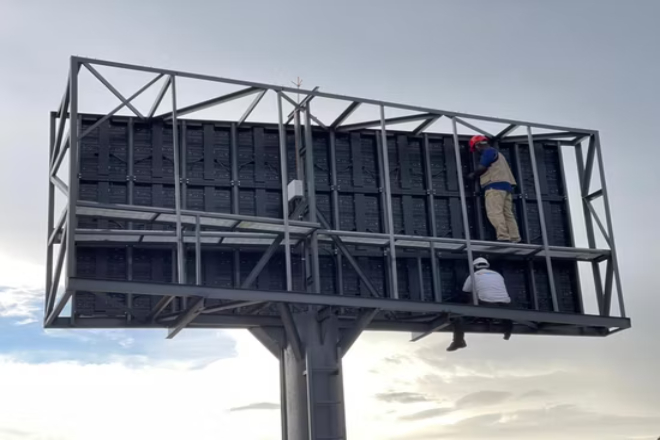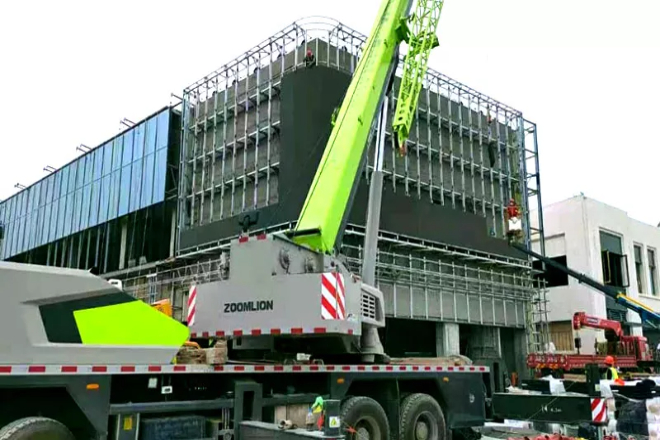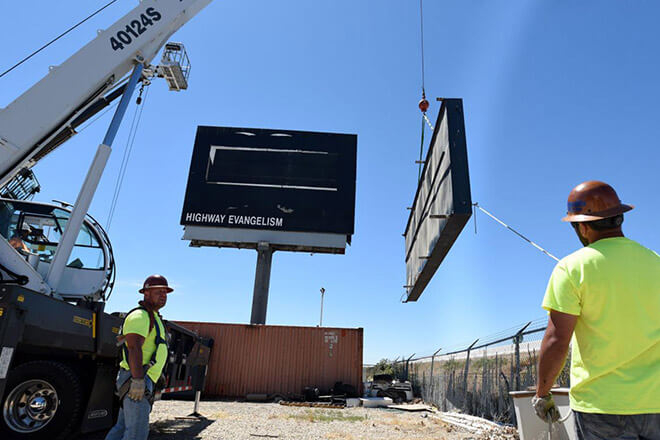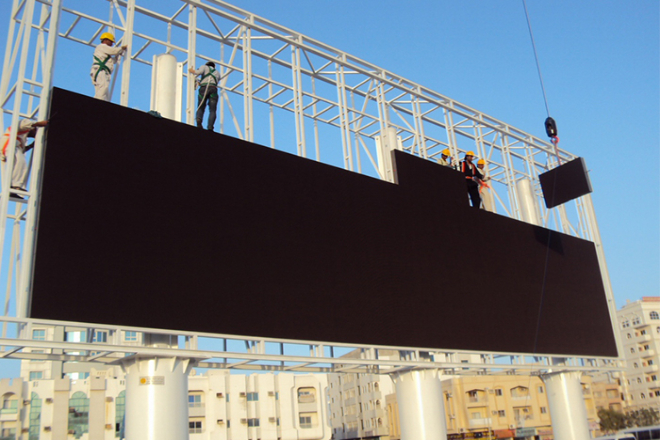Introduction

In today’s digital age, LED displays have become an essential tool for commercial promotion, public information display and creative display. However, facing a limited budget, how to achieve the best installation effect?
This may be a question that many companies and institutions are thinking about. This article will provide you with a comprehensive guide to help you create an ideal LED display project within your budget. Let’s take a look.
Table of Contents
Step 1: Clarify the needs and goals of the LED display installation project
1). Find out what to do
First, you have to figure out what this LED display is used for. For example, it is placed in a shopping mall to play advertisements and attract customers’ attention.
Or it is placed in a school to issue notices; or it is placed in a stadium to display game scores. Different uses have different requirements.
If it is to play advertisements, it must support high-definition pictures and videos, and the picture must be attractive enough.
For example, in a shopping mall, if the advertisement picture is blurry, it will definitely not attract customers.
Moreover, the advertising content may also need to be played regularly, such as by playing promotions in the morning and new product launches in the afternoon.
If it is used to publish text information, such as in a school or company, then the clarity of the text and the scrolling display function should be considered.
For example, if an emergency notice is to be issued in a school if the text is not clear or cannot be scrolled in time, it will not work.
It is also necessary to consider whether it needs to support multiple languages. For example, in some international places, it may be necessary to display multiple languages , such as Chinese and English, at the same time.
In addition, whether there are special content display requirements is also critical.
For example, some creative displays may require dynamic effects, animations, etc., to make the picture move and attract the audience’s attention.
Is it a monochrome display (for example, only red or green), a two-colour display (for example, a combination of red and green), or a full-colour display (a colourful picture)?
Monochrome display is relatively simple and low-cost, but the visual effect is relatively simple, suitable for some simple text or graphic displays.
Two-color display can increase the visual effect, such as highlighting key information.
Full-color display has the best visual effect and can present a colorful picture, suitable for advertising, entertainment and other occasions with high visual requirements.
It is also necessary to consider whether it is a static display (the picture does not move) or a dynamic display (the picture moves).
Dynamic displays are more attractive, such as playing dynamic advertisements in shopping malls or showing dynamic score changes in sports stadiums.
However, the production and updating of dynamic display content may be more complicated, and the production cost and update frequency of the content need to be considered.
For example, can the audience operate the display screen through a touch screen or gestures to obtain more information?
For example, in some science and technology museums or creative exhibition halls, the audience can operate the display screen through a touch screen or gestures to view different content.
This interactive function can increase the audience’s sense of participation.
If remote control is required, such as using a mobile phone APP or the Internet to control the display screen to play content, then you must plan how to operate it in advance.
For example, an advertising company can remotely update advertising content through a mobile phone APP, or management personnel can remotely issue notifications through the Internet.
2). Determine performance indicators
The performance indicator is the quality standard of this LED display screen, which determines whether it can meet your needs.
Simply put, it is the clarity of the picture. If you watch it indoors at a close distance, such as in a shopping mall or office, a higher resolution (such as 1920×1080) will be clearer.
But if you are watching it at a distance outdoors, such as in a square or on the side of the road, a lower resolution is fine, but the picture should look comfortable overall.
For example, a large outdoor advertising screen may only have a resolution of a few hundred pixels, but because the viewing distance is far, it looks quite clear.
The impact of resolution on content should also be considered. If the resolution is too low, high-definition pictures and videos may be distorted, affecting the visual effect.
The brightness of indoor display screens is generally 300-800cd/m², and outdoor display screens are much brighter, at least 5000-10000cd/m², otherwise it is not clear in the sun.
For example, in an outdoor square, if the display screen is not bright enough, the picture cannot be seen clearly during the day.
And it is best to adjust the brightness, otherwise the picture will be too bright or too dark in different light environments.
For example, indoors, the light is very different during the day and at night. If the brightness cannot be adjusted, the picture may be dazzling or unclear.
It is the speed at which the picture is updated. 60Hz is enough for an ordinary display, but if you want to display high-speed motion pictures.
For example, in sports games, the refresh rate should be higher (above 120Hz), otherwise the picture will be smeared.
For example, in a stadium, if the refresh rate is not high enough, the audience may see the athlete’s picture blurry.
It means whether the audience can see the picture clearly from different angles. The viewing angle of indoor display screens is generally 120° – 160°.
It is OK for outdoor display screens to have a smaller viewing angle, but it is necessary to ensure that the audience can see the picture from different angles.
For example, in a school auditorium, the audience sits in the back row or on the side. If the viewing angle is not wide enough, they may not be able to see the picture clearly.
You need to know how long the display screen can be used.
Generally, a good LED display screen can be used for more than 50,000 hours. If the quality is not good, it will break down soon, which is definitely not cost-effective.
Heat dissipation must also be considered, otherwise the display screen will break easily.
For example, in summer, if the heat dissipation is not good, the display screen may overheat, causing the picture to be distorted or directly damaged.
3). Expected results
This step is to think clearly about what effect you want to achieve after installation.
After installation, the picture should be clear, colorful, without flicker or color difference.
For example, in a shopping mall, if the advertising picture is blurry or the colour is not bright, it will definitely not attract customers.
If the display screen is used for creative display, the shape and installation method should be in tune with the surrounding environment and not look abrupt.
For example, in an art exhibition hall, the shape and installation method of the display screen should be consistent with the overall style of the exhibition hall and should not appear out of place.
All functions must be able to work normally. For example, the timed playback function can automatically play when the time is up.
If there is a network function, it can stably receive content. If the function cannot be realized normally, it will definitely affect the use effect.
From the user’s perspective, for example, commercial customers hope that the display screen can attract customers and enhance their image.
Public facility managers hope that the display screen is convenient for publishing information and meeting everyone’s needs. If the user is not satisfied, then the project has failed.
Step 2: Accurately plan and decompose the budget of the installation project

When installing an LED display screen, you must first calculate the budget for the installation, otherwise it is easy to spend more or less.
The installation cost is actually quite complicated, but as long as you think about a few key points, you will have a plan in mind.
First of all, the installation cost is mainly concentrated on labour, equipment rental and transportation. Labour cost is the biggest part. Installing an LED display screen is not something that can be done by one person.
You have to hire professional installers, especially if the display screen is particularly large or the installation location is relatively complex.
For example, at high places or on irregular building surfaces, the labor cost must go up.
Moreover, during the installation process, technicians may be required to debug the display screen to ensure that it can work properly, and this part of the cost must also be included.
Equipment rental is also very important. If the installation location is relatively high or the display screen is particularly large, equipment such as cranes and elevators may be required.
It is not cost-effective to buy these equipment by yourself, and they are generally rented, so the equipment rental fee must also be taken into account. Don’t underestimate this part of the cost. Sometimes the equipment rental fee can even catch up with the labor cost.
Transportation costs cannot be ignored. LED displays are usually large and heavy, and transportation will definitely cost money.
Moreover, you must be particularly careful when travelling. If the screen is damaged due to improper transportation, the loss will be huge.
Therefore, the transportation cost should not only consider the distance and mode of transportation, but also the protective measures during transportation.
The preparation cost of the installation site should also be included. For example, if the installation is in a shopping mall or public place, you may need to clean the site in advance or pay the site rental fee.
If a temporary scaffolding needs to be built at the installation location, this part of the cost should also be considered.
With the total budget, the next step is to divide the money into various parts so that you can have a clear idea.
Generally speaking, labour costs account for about half of the total installation budget, equipment rental and transportation costs each account for about 20%, and the rest is the preparation cost of the installation site and other miscellaneous expenses.
Of course, this is just an approximate ratio, and it must be adjusted according to the actual situation of the project.
After the budget is divided, you still have to see if it is reasonable. If the budget of a certain part is too high or too low, the project may not be able to proceed.
For example, if the labour cost budget is too low, you may not be able to find suitable workers.
If the equipment rental cost budget is too high, it may squeeze out the funds for other parts. Therefore, it must be adjusted flexibly according to the actual situation.
In short, the installation budget planning is to have a clear mind, spend money where it counts, and make the project go smoothly without getting stuck because of money.
Step 3: Find an LED display screen installer that suits you
It is not difficult to find a reliable LED display screen installer. The key is to inquire and compare through multiple channels.
First, search online and enter keywords such as “LED display screen installation” to see which companies you can find.
Don’t just look at the name; you have to click on the official website to understand the company’s strengths and then look at the reviews on social media to see what others say.
This can help you roughly judge whether the company’s service is reliable.
Secondly, there are many specialized service platforms that gather many installers. Once you tell them your needs, the platform can recommend several suitable ones to you, which is convenient and worry-free.
Another thing is to ask your friends and colleagues around you to see if they have cooperated with installers that they think are good.
This kind of word-of-mouth recommendation is very real, because others have experienced it personally, and you will know whether it is reliable or not.
Also, don’t underestimate the power of social media. On platforms like Instagram and YouTube, many installers promote their businesses.
You can look at their cases and listen to customer feedback, and you may find a few good ones.
If conditions permit, it is best to go to the site to inspect and see the office location of the installer, feel their professionalism, and ask about key issues such as service process, charging situation and after-sales guarantee.
Finally, don’t rush to make a decision. Contact several installers to ask about the quotation and service content and compare them.
Don’t just focus on the price. Service quality and after-sales guarantee are also important. After all, installing an LED display is not a trivial matter.
You have to find an installer that you can rest assured about, so as to ensure the smooth progress of the project and save worry in the future.
Step 4: Reasonably arrange the construction process and resources

The construction stage is a key link in the LED display installation project. If it is not arranged well, it is easy to have construction delays, cost overruns or quality problems.
Therefore, it is necessary to plan the construction process in advance, allocate resources reasonably, and ensure that the whole process is efficient and orderly.
First of all, a scientific and reasonable construction plan must be formulated. In simple terms, it is necessary to clearly know when each step starts and ends, divide the entire construction process into small tasks, and then arrange them in order.
For example, the bracket of the display screen must be set up first, then the main body of the screen can be installed, and finally, debugging can be carried out.
The construction sequence is very important. If the sequence is wrong, rework may occur, wasting time and materials.
Therefore, it is necessary to optimize the construction sequence as much as possible and reduce the waiting time between processes.
For example, some work can be done at the same time, so don’t wait for one to be done before doing another.
Secondly, it is also critical to allocate human, material and equipment resources reasonably.
During construction, there must be enough manpower, otherwise the work cannot be completed. But there cannot be too many people; otherwise, it will waste manpower costs.
Therefore, according to the construction plan, it is necessary to arrange in advance how many people are needed every day and who is responsible for which tasks. The same is true for material resources.
For example, materials must be prepared in advance, and you cannot wait until you need them to find that there are not enough materials.
Equipment resources must also be arranged reasonably. For example, large equipment such as cranes and elevators must be booked in advance so that they can be in place in time when they are used.
Finally, quality control must be strengthened during the construction process. If there is a problem with the quality, the cost of rework is not small.
Therefore, each construction link must be strictly checked and operated according to the standards.
For example, the welding quality of the bracket and the installation accuracy of the display screen must be checked by a dedicated person.
If a problem is found, it must be solved in time, and it cannot be discovered at the last minute. It will be troublesome to change it at that time.
Step 5: Effectively control the cost and risk of the project
Controlling costs and risks is the key to ensuring the smooth progress of the LED display installation project.
During the project, over budget or unexpected problems may cause the project to stagnate or even fail. Therefore, it is necessary to plan in advance, monitor in real-time and make timely adjustments.
First, a cost monitoring system should be established to track the budget execution in real-time.
It is like having a “small account book” to record daily expenses and the actual expenses of various expenses and compare them with the budget.
Once deviations are found, such as labor cost overruns, adjust the construction plan or optimize staffing in time.
Second, identify possible risks in advance, such as material price fluctuations, construction progress delays, etc., and formulate countermeasures.
For example, if you are worried about material price increases, lock in prices in advance; if you are worried about progress delays, formulate emergency plans, such as adding manpower or adjusting the construction sequence.
Finally, cost analysis and risk assessment should be conducted regularly. During the project, the situation may change, such as market price fluctuations or new problems in construction.
Every once in a while, such as weekly or monthly, check whether the budget and risks are still within the controllable range.
Find problems and adjust the budget and construction plan in time to ensure the smooth progress of the project.
In short, through real-time monitoring, advance planning, and regular evaluation, costs and risks can be effectively controlled to ensure that the project proceeds smoothly and according to budget.
Step 6: Strengthen project team collaboration and communication

In the LED display installation project, team collaboration and communication are important guarantees to ensure the smooth progress of the project.
If the team members do not cooperate well or the information is not transmitted smoothly, it is easy to cause project delays or errors.
First, it is necessary to establish an efficient project team and clarify the responsibilities and tasks of each member.
Just like a relay race, everyone knows which baton they are going to run, so as to ensure smooth team collaboration.
For example, the project manager is responsible for overall planning and coordination, the technician is responsible for equipment commissioning, and the installer is responsible for on-site construction. Everyone performs their duties and cooperates with each other.
Secondly, hold project meetings regularly to communicate project progress, problems and solutions in a timely manner.
During the project, it is inevitable to encounter various problems, such as delayed material supply and technical difficulties.
Through regular meetings, everyone can share information in a timely manner to avoid decision-making errors caused by information asymmetry.
For example, hold a project progress meeting once a week to let each member know the latest situation of the project, and discuss solutions together if there are any problems.
Finally, it is necessary to cultivate the cost awareness and budget management ability of team members.
The project budget is like a “money bag”. Everyone should have a sense of saving and avoid unnecessary expenses.
Through training or daily reminders, team members can understand the importance of cost control and form a good atmosphere for all members to participate in cost control.
For example, remind workers to use materials reasonably to avoid waste; technicians optimize construction plans to reduce unnecessary rework.
In short, by clarifying responsibilities, strengthening communication and cultivating cost awareness, the efficiency of team collaboration can be effectively improved to ensure the smooth progress of the project.
7. Conclusion
Through the detailed introduction of this article, I believe you have a clear idea of how to achieve the best installation effect of LED display within the budget.
Whether it is clarifying needs, planning budgets, or choosing the right installer and optimizing construction processes, every link is related to the success or failure of the project.
I hope these practical suggestions can help you successfully complete the project and create an impressive LED display.
Finally, if you want to know more about LED displays, please get in touch with us.
